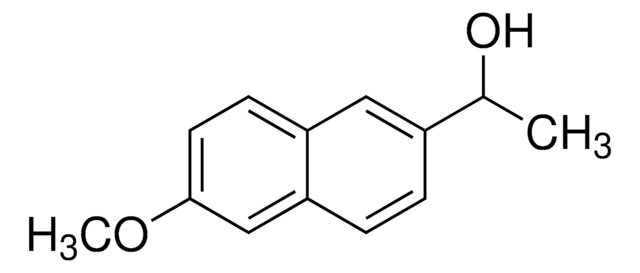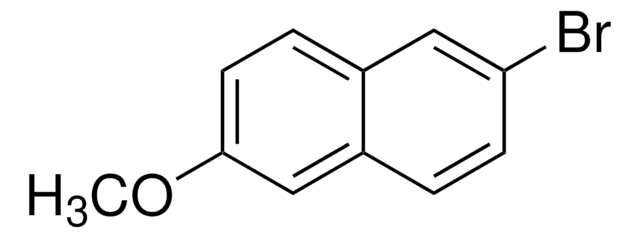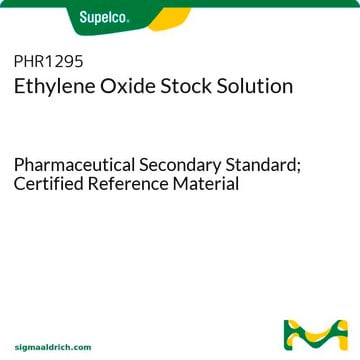82320
(±)-propylène oxyde
puriss. p.a., ≥99.5% (GC)
Synonyme(s) :
(±)-Methyloxirane, 1,2-Epoxypropane
About This Item
Produits recommandés
Densité de vapeur
2 (vs air)
Pression de vapeur
29.43 psi ( 55 °C)
8.59 psi ( 20 °C)
Qualité
puriss. p.a.
Pureté
≥99.5% (GC)
Forme
liquid
Température d'inflammation spontanée
1378 °F
Limite d'explosivité
37 %
Impuretés
≤0.1% water
Résidus d'évap.
≤0.005%
Indice de réfraction
n20/D 1.366 (lit.)
n20/D 1.366
Point d'ébullition
34 °C (lit.)
Pf
−112 °C (lit.)
Densité
0.83 g/mL at 25 °C (lit.)
Traces de cations
Al: ≤0.5 mg/kg
Ba: ≤0.1 mg/kg
Bi: ≤0.1 mg/kg
Ca: ≤0.5 mg/kg
Cd: ≤0.05 mg/kg
Co: ≤0.02 mg/kg
Cr: ≤0.02 mg/kg
Cu: ≤0.02 mg/kg
Fe: ≤0.1 mg/kg
K: ≤0.5 mg/kg
Li: ≤0.1 mg/kg
Mg: ≤0.1 mg/kg
Mn: ≤0.02 mg/kg
Mo: ≤0.1 mg/kg
Na: ≤0.5 mg/kg
Ni: ≤0.02 mg/kg
Pb: ≤0.1 mg/kg
Sr: ≤0.1 mg/kg
Zn: ≤0.1 mg/kg
Conditions d'expédition
wet ice
Température de stockage
2-8°C
Chaîne SMILES
CC1CO1
InChI
1S/C3H6O/c1-3-2-4-3/h3H,2H2,1H3
Clé InChI
GOOHAUXETOMSMM-UHFFFAOYSA-N
Vous recherchez des produits similaires ? Visite Guide de comparaison des produits
Catégories apparentées
Description générale
Application
- Poly(3-hydroxybutyrate), a biodegradable and biocompatible polyester, by carbonylative polymerization.
- Poly (propylene-ram-ε-caprolactone carbonate) (PPCL) and poly (propylene carbonate) (PPC), which are applicable as drug carriers.
Mention d'avertissement
Danger
Mentions de danger
Conseils de prudence
Classification des risques
Acute Tox. 3 Dermal - Acute Tox. 3 Inhalation - Acute Tox. 4 Oral - Carc. 1B - Eye Irrit. 2 - Flam. Liq. 1 - Muta. 1B - STOT SE 3
Organes cibles
Respiratory system
Code de la classe de stockage
3 - Flammable liquids
Classe de danger pour l'eau (WGK)
WGK 3
Point d'éclair (°F)
-36.4 °F - Equilibrium method
Point d'éclair (°C)
-38 °C - Equilibrium method
Équipement de protection individuelle
Faceshields, Gloves, Goggles
Certificats d'analyse (COA)
Recherchez un Certificats d'analyse (COA) en saisissant le numéro de lot du produit. Les numéros de lot figurent sur l'étiquette du produit après les mots "Lot" ou "Batch".
Déjà en possession de ce produit ?
Retrouvez la documentation relative aux produits que vous avez récemment achetés dans la Bibliothèque de documents.
Les clients ont également consulté
Notre équipe de scientifiques dispose d'une expérience dans tous les secteurs de la recherche, notamment en sciences de la vie, science des matériaux, synthèse chimique, chromatographie, analyse et dans de nombreux autres domaines..
Contacter notre Service technique











